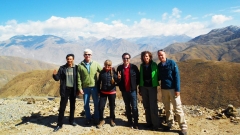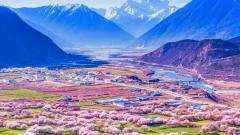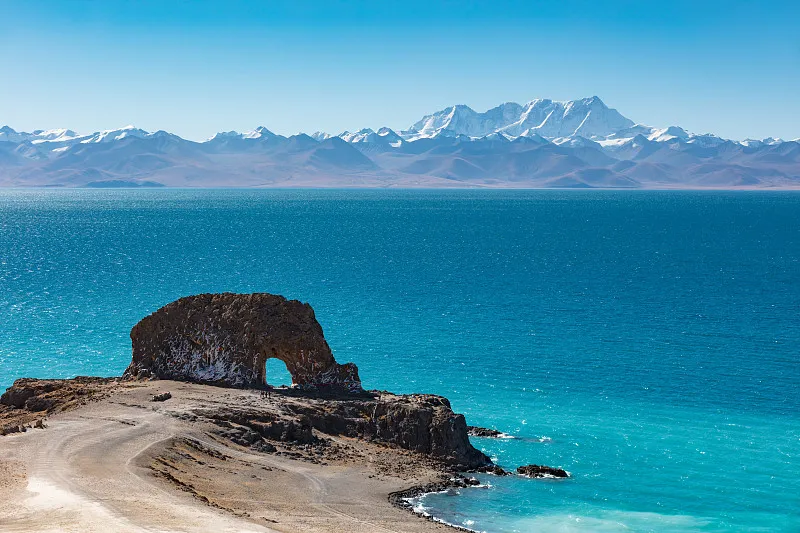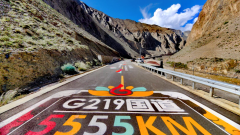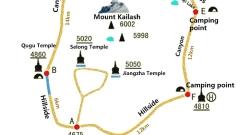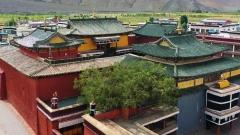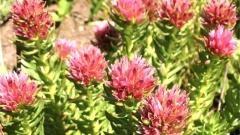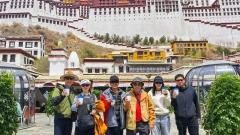Nestled in the captivating expanse of western Tibet lies the ancient realm of Guge, a civilization that once flourished for over seven centuries before vanishing into the mists of history. Today, its weathered ruins stand sentinel amidst arid plateaus, inviting intrepid travelers to explore a chapter of Tibetan lore seldom told. From the grand palaces carved into sheer cliffs to the exquisite frescoes that whisper of bygone artistry, Guge offers an unforgettable journey into a land where faith, art and power intertwined.
A Kingdom Hidden in Time – Guge kingdom History
More than a millennium ago, the Guge dynasty emerged on the high plateau of Ngari Prefecture, within present‑day Zhada County. Founded around the 10th century by descendants of the western Tibetan royal house, Guge grew into a realm renowned for its spiritual devotion and strategic position along trans‑Himalayan trade routes. Over successive generations, sixteen monarchs guided the kingdom’s affairs, fostering flourishing monasteries, commissioning grand architectural works, and establishing irrigation systems that tamed the desert‑like environs.
By the 17th century, however, Guge’s fortunes had begun to wane. Internal strife, shifting political alliances and pressure from neighboring powers culminated in its downfall. According to legend, a siege by pro‑Buddhist forces from Ladakh brought the kingdom to its knees, and its ruling line was extinguished. Yet the true story remains shrouded, for few contemporary records survive, and archaeology has only scratched the surface of Guge’s mysteries.
It was not until 1624 that Western eyes first beheld Guge. Jesuit missionaries António de Andrade and Manuel Marques trekked across the harsh terrain, drawn by reports of a hidden realm steeped in sophisticated culture. They marveled at its irrigation channels and welcomed the chance to teach Christianity within one of Guge’s monasteries. Their accounts ignited European fascination, but by the missionaries’ return, Guge had already slipped beneath the desert sands, its inhabitants gone and its treasures left to echo through empty halls.
It would take nearly three centuries of obscurity before Italian scholar Giuseppe Tucci re‑introduced Guge to the world in the 20th century. His expeditions uncovered palaces, chapels and murals that attested to a vibrant civilization. Today, Guge stands as one of Tibet’s most spellbinding archaeological sites—part history lesson, part adventure playground.

Exploring the Guge Grand Palace
The crowning jewel of the Guge ruins is the Grand Palace, a soaring complex carved into a sheer mountainside above the Xiangquang River. Ascending more than 300 meters above the valley floor, the palace sprawls over 720,000 square meters and comprises hundreds of rooms, shrines and defensive works.
- Terraced Architecture
The palace’s design seems almost organic: tier upon tier of chambers are stacked one above another, connected by narrow stairways and steep ramps. Wandering through its labyrinthine corridors, visitors can imagine courtly processions, monkish rituals and the daily bustle of a medieval capital. - 445 Discovered Rooms
To date, archaeologists have mapped out 445 rooms within the palace precincts. These include living quarters for kings and nobility, administrative offices, storehouses and chapels dedicated to both Buddhist and native Bon deities. - Caves and Secret Passages
Beyond the visible chambers, some 879 caves punctuate the cliffs, serving myriad purposes from hermit’s retreats to burial sites. Four enigmatic tunnels—long sealed by rockfall—hint at hidden passages, possibly intended for escape during sieges. - Defensive Pillboxes and City Walls
Surrounding the palace, remnants of thick mud‑brick ramparts and four artillery pillboxes underscore Guge’s strategic importance. Though time has worn away much of the masonry, the surviving vestiges speak to a kingdom prepared to guard its riches.
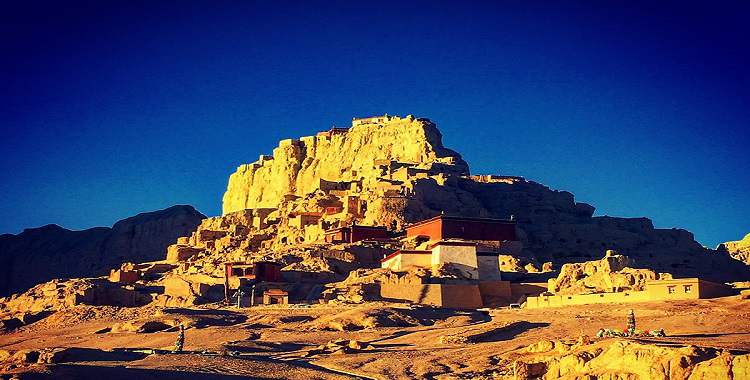
Marvels of Art: The Frescoes of Guge
Perhaps the single most striking feature of Guge is its frescoes: vivid wall paintings that imbue the ruins with color and meaning. Painted with mineral pigments on plastered walls, these murals capture the fusion of Indian, Nepalese and native Tibetan artistic traditions.
- Buddhist Pantheon
In the Mandala Chapel, concentric circles of deities illustrate cosmic mandalas used for meditation. Figures such as Yamantaka, the wrathful conqueror of death, and Tara, the compassionate savior, appear in rich blues, reds and golds. - Courtly Scenes and Donors
Elsewhere, frescoes depict Guge’s royalty and aristocracy in ceremonial attire, often accompanied by inscriptions in ancient Tibetan script. These donor portraits offer glimpses of the patrons who commissioned the art, revealing ties between the throne and the monastery. - Iconography and Symbolism
Symbols—such as lotus blossoms, vajras (thunderbolts) and endless knots—pepper the frescoes, reinforcing Buddhist teachings on purity, indestructibility and interdependence. Even now, the paintings’ intricate details dazzle the eye.
Visitors are urged to tread lightly and refrain from photography inside the chapels: daylight can accelerate pigment fading, and flash can stress the fragile surfaces. Guided tours ensure respectful viewing while imparting deep insights into the murals’ spiritual significance.
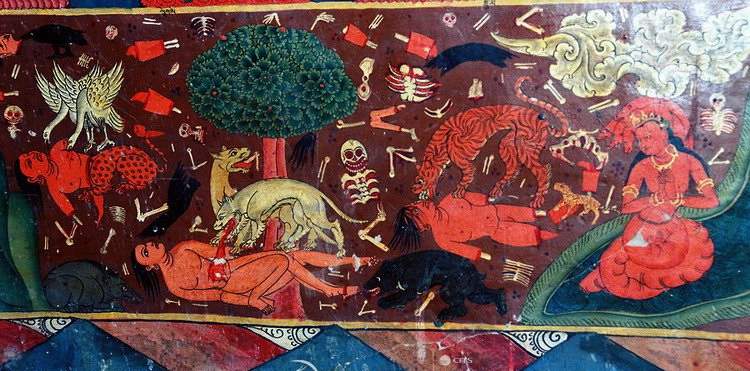
The Stupas of Guge
Dotting the slopes around the palace are 28 stupas—tapering, pagoda‑like monuments honoring Buddha and his teachings. Built of sun‑baked brick, these stupas once gleamed white under the high plateau sun, each crowned with a parasol finial signaling its sacred function.
- Architectural Elegance
Despite centuries of exposure, many stupas retain crisp lines and ornamental niches that once held statues, relics and offerings. Their symmetrical forms symbolize the path to enlightenment, with square bases representing earth, domed middles symbolizing water, and spires pointing toward the heavens. - Pilgrimage and Ritual
Ancient pilgrims would circumambulate these stupas clockwise, spinning prayer wheels inscribed with mantras. Even today, local Tibetans perform kora (devotional circuits), leaving prayer flags fluttering in the wind.

Time Your Visit to Guge
Guge’s remoteness and high‑altitude desert climate demand careful planning. The ideal window falls between late summer and early autumn (August–October), when daytime temperatures hover pleasantly between 15 °C and 25 °C, and nights, while brisk, seldom drop below freezing.
- Avoiding the Monsoon
Spring and early summer can bring sudden storms, turning the dusty trails into quagmires. Late autumn ushers in harsher colds and shorter daylight hours, making exploration more challenging. - Golden Light
Photographing the palace and ruins during the “golden hours”—shortly after sunrise and before sunset—yields the richest hues, with the ochre cliffs glowing warmly against crisp blue skies.
Preparing for the Guge Journey
Permits and Logistics
Travel to Ngari Prefecture requires a special Tibet Travel Permit, obtained through authorized tour operators. Independent travelers must also secure a military permit for certain border‑adjacent areas; China Dragon Travel can assist in arranging all necessary documentation.
Accommodations
There are no lodging facilities within the Guge site itself. Most visitors stay in modest guesthouses in Zhada County, about 20 kilometers away. For an immersive experience, some choose to camp at designated sites near the ruins—just be prepared for cold nights and bring a high‑quality tent and sleeping bag rated for subzero temperatures.
Altitude Acclimatization
Zhada sits at roughly 4,500 meters above sea level. Ascend gradually from Lhasa (3,650 m) or nearby Shiquanhe (4,200 m) to reduce the risk of acute mountain sickness. Hydrate thoroughly, limit exertion on your first day and consult a medical professional about altitude medications if you’ve experienced sensitivity in the past.
The Enduring Allure of Guge
Though centuries have passed since its heyday, Guge continues to enchant visitors with its fusion of myth and material culture. Every crumbling archway, every fragment of mural and every silent stupa speaks of a people whose faith and artistry soared as high as the Himalayas themselves. To wander among these ruins is to touch the pulse of a lost kingdom—and to realize that, even in desolation, beauty endures.
Discover Guge with China Dragon Travel
Embark on an unforgettable journey to Guge Kingdom with China Dragon Travel. Our expert guides handle all logistics—from permits and transportation to camping gear and accommodations—so you can focus on the wonder of exploration. Whether you choose a private expedition or a small‑group tour, we’ll ensure your adventure through Tibet’s hidden marvels is seamless, enriching and utterly unforgettable. Contact us today to plan your Guge Kingdom voyage!





